Environmental artist Eve Mosher has been using art and climate science to creatively engage with community members and inspire agency in their climate awareness and action. Rooted in imagination and storytelling, Eve employs many mediums and formats to develop artistic installations, projects, and experiences that bridge gaps between climate science and individual stories. Having experience with teaching at Parsons The New School for Design, facilitating numerous workshops and lectures, collaborating in community projects, and putting on both group exhibitions and solo shows, Eve is a prolific creative whose impact has been far-reaching. Now based in rural Scotland after many years in New York City, Eve continues to create art and experiences that explore communities’ and individuals’ relationships with water.
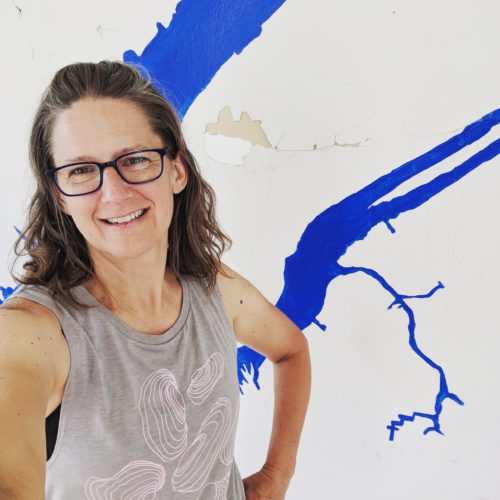
We caught up with Eve recently to learn more about her inspirations and ideas in climate-themed art and storytelling.
ClimateMusic: Could you tell us about how you became inspired to dedicate your life to pursuing the intersections of climate change, waterways, artistic experiences, and storytelling?
EM: I think it was always a part of me – I grew up in a rapidly suburbanizing flood plain and studied environmental design (basically the interactions between people, built space and the environment). For many years I worked as a studio artist and then realized that I wanted to work outside, that gradually morphed into public and interactive works. A clear turning point for me though was reading a Sierra magazine in 2006 and getting really mad about the state of media and politics on climate change. That anger was a great motivator and got me working very directly on climate impacts. A long time collaboration with artist Heidi Quante inspired me to work in and with communities and weaving in the storytelling aspects.
ClimateMusic: Having engaged in dozens of community art projects, workshops, installations, and experiences, many of your past work share a common theme: water. What initially drew you to creating art focusing on our relation to our surrounding waterways? How has your work influenced and shaped your own connection to the water that surrounds you?
EM: I have always been drawn to coastlines, and I think growing up in a place that frequently flooded created a real sense of awareness of the fluidity (lol) of water and its edges. Of course in New York City, I was living on an archipelago and despite the density of the city was always aware of and connected to the water – whether getting out on the waterways or seeing water flow and collect around the city. There is a power and a beauty to water and the sense that it will go where it wants to go. It has real memory and also carries its own stories around the world. There is a simultaneous awesomeness and comfort to bodies of water.
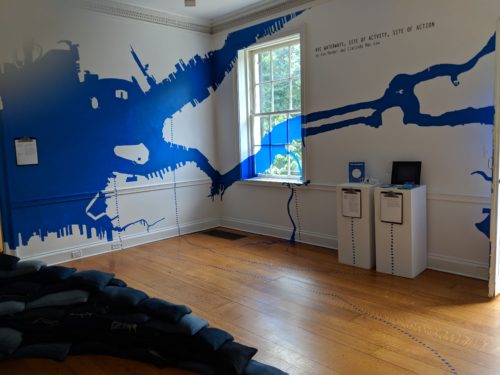
ClimateMusic: Often, climate science reports are complex, technical, and inaccessible to the general public, but communicating these results is crucial to increasing climate awareness and engaging in climate action. Your HighWaterLine series is one innovative example of achieving greater awareness about rising water levels. How do you believe HighWaterLine and your other works make these climate results more personal to community members? Why is doing so important to you?
EM: At the time that I started HighWaterLine most of the discussions around climate change were still about distant impacts — like polar bears being threatened. I knew that we weren’t thinking about or presenting climate change in the systematic way that the impacts were going to ripple out and be felt everywhere. I do think that it is hard to think about something as complex both in impact and mitigation and adaptation as climate change, so getting out into the places that were going to be directly affected felt like an important approach. It’s used often in urban planning, to set up what could be as a chance to try it out (like temporary pedestrianized spaces or temporary parks before they become permanent). I think as humans we need multi-sensory input to really internalize climate change – so being in the place where the flooding would occur was really powerful.
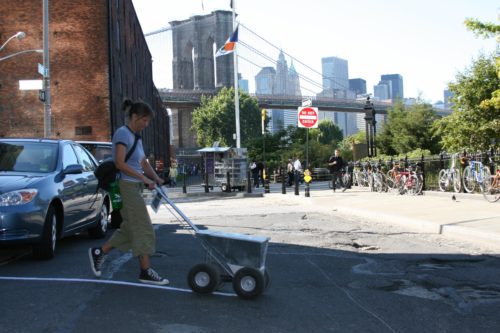
ClimateMusic: The Story of Tomorrow is another project that integrates music, poetry, mapped projections, outdoor public space, and other visual and auditory elements to interrelate nature, beauty, food, water, energy, and the built environment—all in one experiential installation. Can you describe what inspired this project and what processes were involved in bringing your ideas to life?
EM: This project is still, unfortunately, just a proposal. I am working towards it through other projects, but it came up for me during the covid lockdown in early 2020. I was thinking about how emerging from lockdown we would need artwork that was hopeful, inspirational, and immersive, while also allowing us to remain socially distanced. The idea is to work within communities to workshop their ideas for what a space could look like in the future and then to create audio documentaries (like I have done for holding the ocean and future philly) and projection mapping the space as fully transformed. This again is a multi-sensory installation which focuses on what can be. I think we really have to talk more about what the change could look like in a world that is responding appropriately to climate change. Otherwise we will have a hard time getting there. It is basic common sense, you can’t achieve a goal without knowing what it is and what it looks like. We as creatives have gotten really good about depicting chaos and collapse, but we really need to find the tools that inspire action and change.
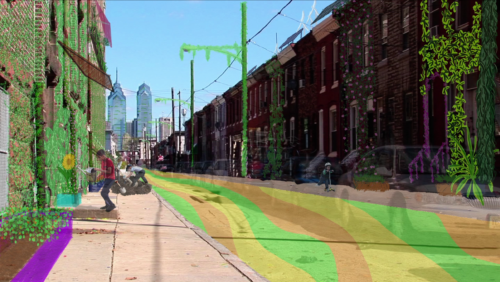
ClimateMusic: Much of your work has also directly involved engaging with the public to tell their stories. Could you tell us about how you use art to lift the voices of these community members, especially for individuals whose voices have been historically excluded or diminished? What value do you see in creatively shedding light on these narratives?
EM: Historically, so many decisions about people and places were made without input from the people from those places. I love the quote “nothing about us, without us.” As an artist it doesn’t make sense for me to speak for someone else, but rather to develop methods and ways to uplift their stories. I think by excluding these voices we not only lose the lived experience but we lose a lot of lived and cultural expertise. I spend time learning and listening and then collaborating to develop projects, that’s why they end up in so many different media, each project might require a different approach. We are also storytellers by nature and learn through story, so by making stories an integral part of the work maybe they will inspire change that itself ripples out…
ClimateMusic: In response to our ever-growing climate crisis, you’ve said that you “aim to ignite radical ideas for the future of the waterways” through your work. Can you share some ways in which your art has impacted your audiences? What do you personally envision for the future of our waterways and climate systems, whether on a local or global scale?
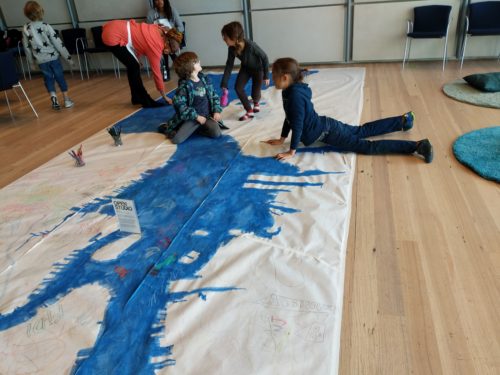
EM: I’ve really shifted from thinking about the impact of the work on any audience to the impact of the work on the partners, community and decision makers. The
process of creating the work often has a longer lasting impact than any artwork that emerges from the collaboration. Those partnerships and collaborations have had impacts on the individuals and institutions that I have worked with who in turn are inspiring and making change happen. The biggest impact I might have had over the years is inspiring more artists to take up work on climate change and inspiring communities to get creative in their work on climate change.
For the waterways, in New York I was keen to create a space to bring together many different disciplines into an open ended research and creativity process. Together with an amazing team of other creatives and producers we did that to some degree with Works on Water. Now, as I am living in a coastal village that historically relied on textile production and fishing, I am looking to confront the future and our role in it by co-creating a creativity and innovation space here where we can experiment with how coastal villages can be resourceful and resilient at the same time. Stay tuned for that!
ClimateMusic: Finally, where can we keep up with your future endeavors?
EM: I try to keep my website: evemosher.com pretty well updated, but I also post a lot of my work, as well as pretty clouds and sunrises on my instagram feed: @evemosher and thanks for including me!